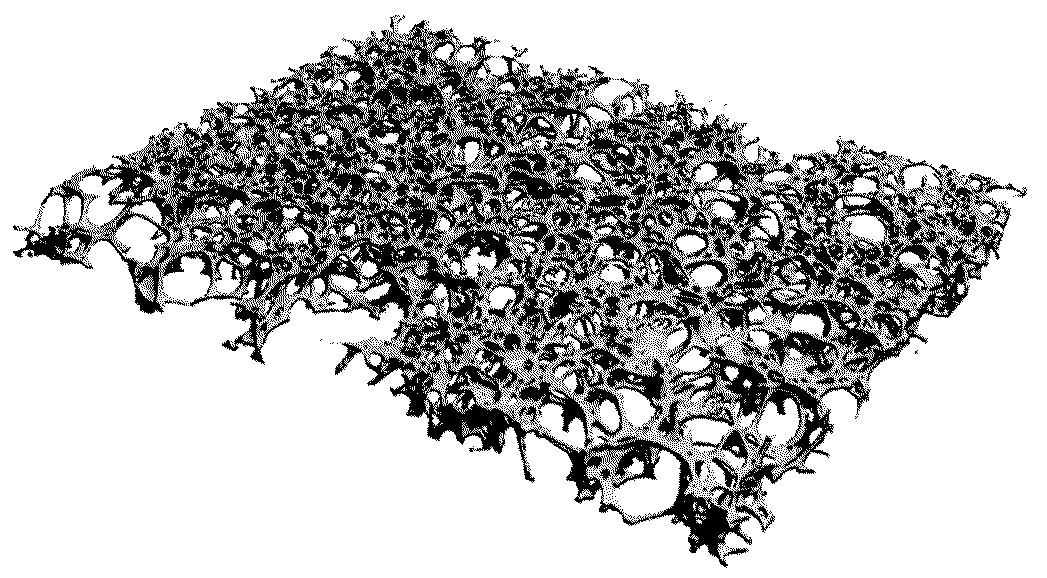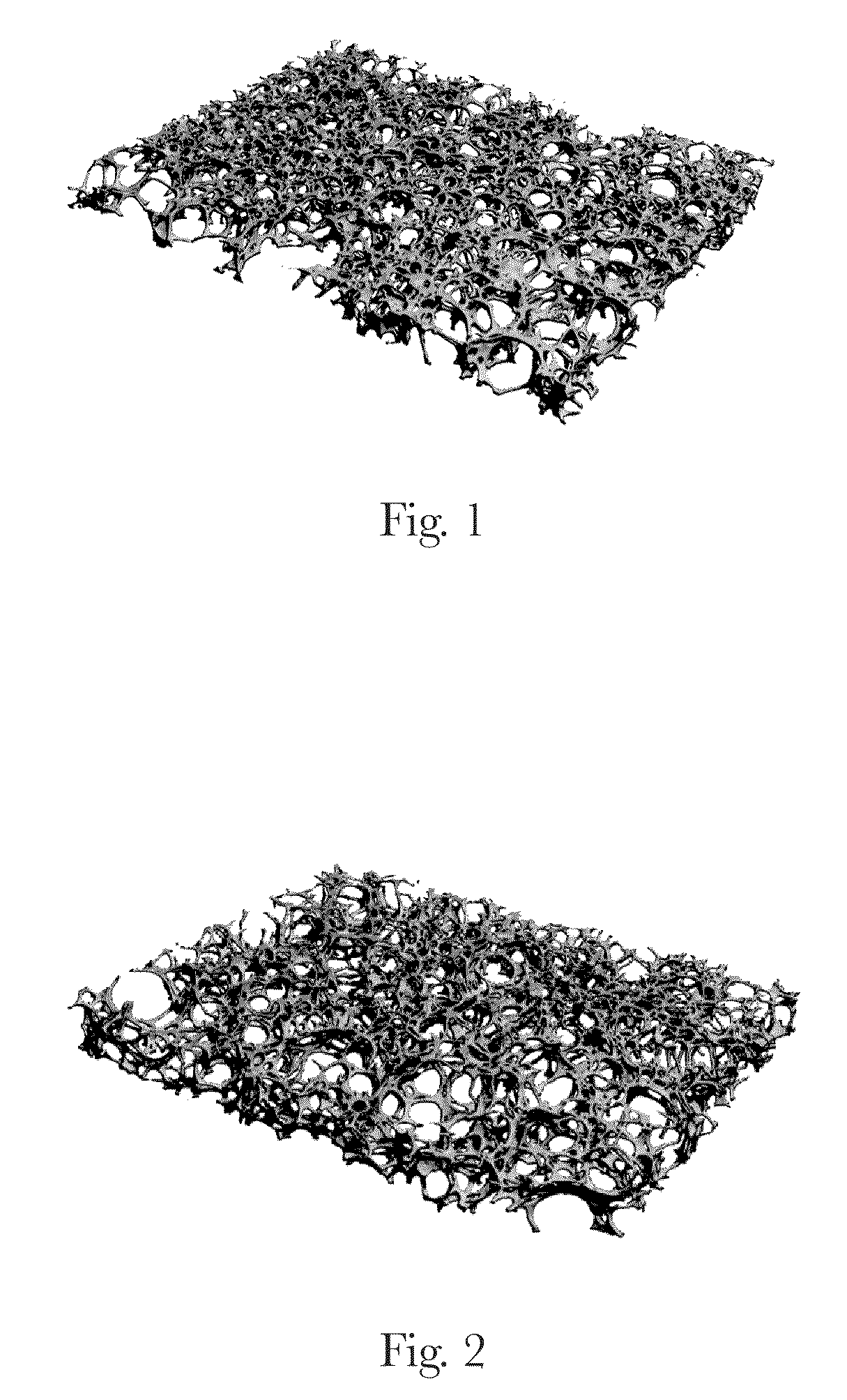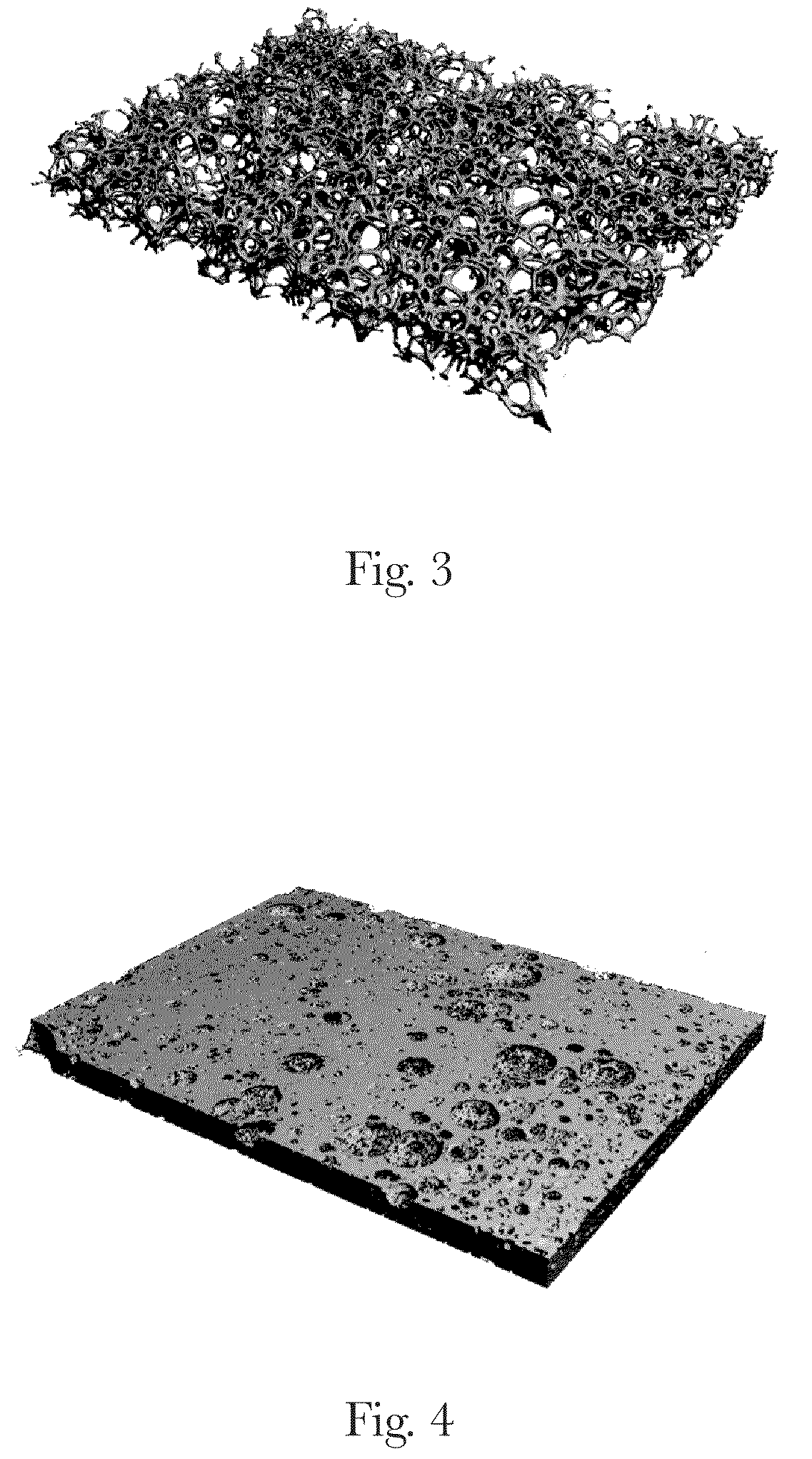Personal Care Composition in the Form of an Article
a composition and composition technology, applied in the field of personal care compositions, can solve the problems of significant weight and size, and significant weight and size, and achieve the effects of increasing shipping and storage costs, and reducing the cost of liquid products
- Summary
- Abstract
- Description
- Claims
- Application Information
AI Technical Summary
Benefits of technology
Problems solved by technology
Method used
Image
Examples
example 1
Dissolving Porous Solid Cleanser with Polyvinyl Alcohol
[0137]The following dissolving porous solid is prepared in accordance to the present invention:
TABLE 1ComponentWt %Distilled water23.4Glycerin2.9Polyvinyl alcohol17.3Ammonium Laureth-3 sulfate (25% activity)40.0Ammonium Lauryl sulfate (25% activity)24.0Cetyl alcohol0.9Cocamide MEA1.5Total100.01CELVOL ® 523 available from Celanese Corporation (Dallas, Texas)
[0138]Into an appropriately sized and cleaned vessel, the distilled water and glycerin is added with stirring at 100-300 rpm. The CELVOL® 523 is weighed into a suitable container and slowly added to the main mixture in small increments using a spatula while continuing to stir while avoiding the formation of visible lumps. The mixing speed is adjusted to minimize foam formation. The mixture is slowly heated to 75° C. after which the ammonium laureth-3 sulfate and ammonium lauryl sulfate are added. The mixture is allowed to again reach 75° C. and the cetyl alcohol and cocamide M...
example 3
Dissolving Porous Solid Cleanser with Hydroxypropylmethyl Cellulose
[0144]The following dissolving porous solid is prepared in accordance to the present invention. 80 parts of the identical composition of example 2 with hydropropylmethyl cellulose is diluted with 20 parts distilled water. The viscosity of the mixture is approximately 12,000 to 15,000 cps at 1 s−1. The mixture was analyzed under an optical light microscope between cross-polarizers and determined to be isotropic based on the absence of observable birefringence.
[0145]The same aeration and drying procedure is performed as described in Example 1 giving approximate average wet and dry densities as indicated in Table 4. The estimated surfactant levels are between 49 wt % and 66 wt % and the estimated polymer level is between 19 wt % and 26 wt %, assuming a moisture content of between 0 wt % and 10 wt %.
TABLE 430 seconds mixing60 seconds mixing90 seconds mixingWet Density0.43grams / cm30.29grams / cm30.27grams / cm3Dry Density0.10...
example 5
Dissolving Porous Cleanser Solid with Polyvinyl Alcohol and Hydrotrope
[0149]The following dissolving porous solid is prepared in accordance to the present invention:
TABLE 7ComponentWt %Distilled waterQS 100Glycerin1.0Polyvinyl alcohol17.3Sodium Laureth-3 sulfate (28% activity)35.7Sodium Lauryl sulfate (29% activity)20.7Cetyl alcohol0.9Cocamide MEA1.5Tetrasodium EDTA0.04Sodium benzoate0.08Kathon CG20.01Sodium xylene sulfonate (40.5% active)11.11CELVOL ® 523 available from Celanese Corporation (Dallas, Texas)25-chloro-2-methyl-4-isothiazolin-3-one and 2-methyl-4-isothiazoliin-3-one available from Rohm and Haas (Philadelphia, PA).
[0150]Into an appropriately sized and cleaned vessel, the distilled water and glycerin is added with stirring at 100-300 rpm. The CELVOL® 523 is weighed into a suitable container and slowly added to the main mixture in small increments using a spatula while continuing to stir while avoiding the formation of visible lumps. The mixing speed is adjusted to minimi...
PUM
| Property | Measurement | Unit |
|---|---|---|
| Star Volume | aaaaa | aaaaa |
| thickness | aaaaa | aaaaa |
| density | aaaaa | aaaaa |
Abstract
Description
Claims
Application Information
 Login to View More
Login to View More - R&D
- Intellectual Property
- Life Sciences
- Materials
- Tech Scout
- Unparalleled Data Quality
- Higher Quality Content
- 60% Fewer Hallucinations
Browse by: Latest US Patents, China's latest patents, Technical Efficacy Thesaurus, Application Domain, Technology Topic, Popular Technical Reports.
© 2025 PatSnap. All rights reserved.Legal|Privacy policy|Modern Slavery Act Transparency Statement|Sitemap|About US| Contact US: help@patsnap.com



